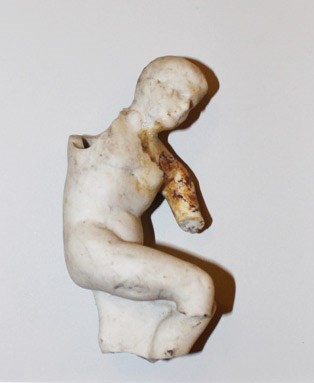
NPS 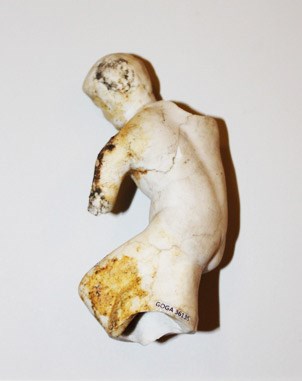
NPS This small figurine copy of the Classical "Discus Thrower" statue is believed to have been recovered from the site Sutro Heights Residence or Conservatory. The material is a type of unglazed ceramic called Parianware, which was popular with Victorian consumers for replicating the appearance of un-polished marble. The statue's head was broken off at the time of catalog, and has since been mended back together with archival glue. Interestingly enough, at close look you can see remnants of historical mending as well: a thin line of glue is smudged along a large crack across the statue's shoulder. This means that some cared enough about this small little statue to mend it rather than discard it when it broke. 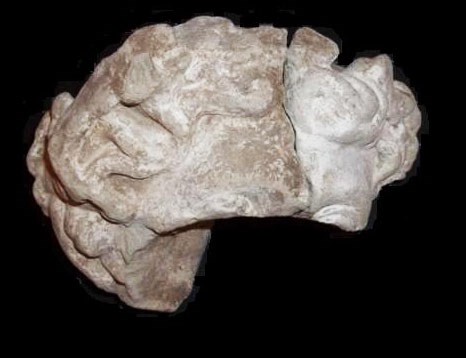
NPS Here is an example of Victorian Classical Revival landscaping at Lands End. These two statue fragments were recovered from Adolph Sutro's estate at Sutro Heights. The two pieces join to form the brow ridge of a young man or woman with curly hair and a laurel encircling his/her head, posed and staring serenely in the distance. Although this particular statue cannot be definitively identified, it is very similar in form to statues at Sutro Heights. 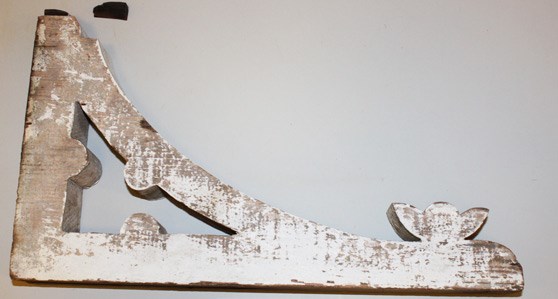
NPS Archeology does not take place only underground. In 2004, this decorative wooden corbel was recovered from the front porch of the residence at Golden Gate Dairy in Marin during building rehabilitation. Park archeologists and historic architects wanted to preserve a copy of the original architectural element as an example of agricultural vernacular architecture. 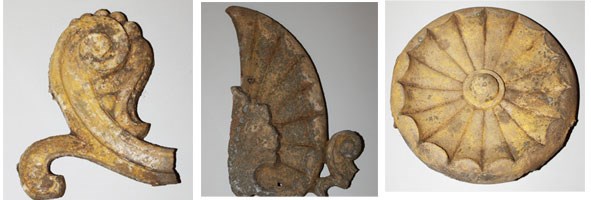
NPS These three artifacts were recovered from Merrie Way Stands during an excavation in 2011 prior to the new Lands End Lookout Visitor Center construction. All three pieces were part of a decorative trim on the roofs of the concession stands at Merrie Way amusement park in the 1880s and 1890s. Each piece is called an antefix, and from left to right they are a scroll, a palmette, and a rosette. The pieces linked together, and combined made a repeating motif that encircled the edge of the roofline of the stands. This motif was derived from Classical Greek and Roman architecture, and similar styles were popular in Victorian architecture of the time. Please visit the park's Artifacts and Collections page. Please visit the park's Archeology at Golden Gate page.
|
Last updated: February 28, 2015
